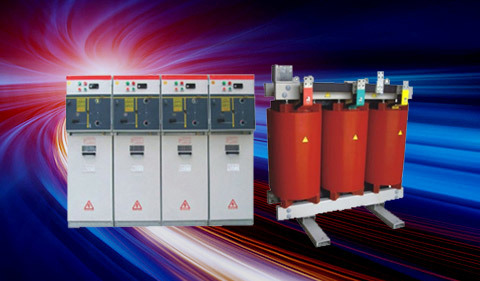The basic principle of a transformer.
Release time:
2024-12-26
When a sinusoidal alternating voltage U1 is applied across the primary coil, an alternating current I1 flows through the wire, generating an alternating magnetic flux ф1. This flux passes through the iron core, crossing both the primary and secondary coils, forming a closed magnetic circuit.
When a sinusoidal AC voltage U1 is applied across the primary coil, an alternating current I1 flows through the wire, generating an alternating magnetic flux ф1, which passes through the primary and secondary coils along the iron core, forming a closed magnetic circuit. An induced mutual electromotive force U2 is generated in the secondary coil, while ф1 also induces a self-induced electromotive force E1 in the primary coil, with E1's direction opposite to that of the applied voltage U1 but with a similar magnitude, thus limiting the size of I1. To maintain the existence of the magnetic flux ф1, a certain amount of electrical energy consumption is required, and the transformer itself also has certain losses. Even when the secondary is not connected to a load, there is still a certain current in the primary coil, which we refer to as "no-load current."
If a load is connected to the secondary, the secondary coil generates a current I2, which in turn produces a magnetic flux ф2. The direction of ф2 is opposite to that of ф1, creating a canceling effect, which reduces the total magnetic flux in the iron core, thereby decreasing the self-induced voltage E1 in the primary, resulting in an increase in I1. It can be seen that the primary current is closely related to the secondary load. When the secondary load current increases, I1 increases, and ф1 also increases, with the increase in ф1 exactly compensating for the portion of magnetic flux canceled by ф2, maintaining the total magnetic flux in the iron core. If we disregard the losses in the transformer, it can be considered that the power consumed by the secondary load in an ideal transformer is equal to the electrical power obtained by the primary from the power source. The transformer can change the secondary voltage by altering the number of turns in the secondary coil as needed, but it cannot change the power that the load is allowed to consume.
Related News
Nantong Longxiang Electrical Equipment Co., Ltd.

sweep, mobile version!
Copyright©2024 Nantong Longxiang Electrical Equipment Co., Ltd. 丨Tag l Powered by 300.cn






 86-13057026999
86-13057026999